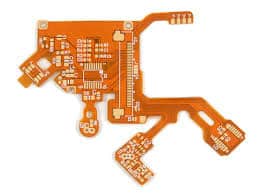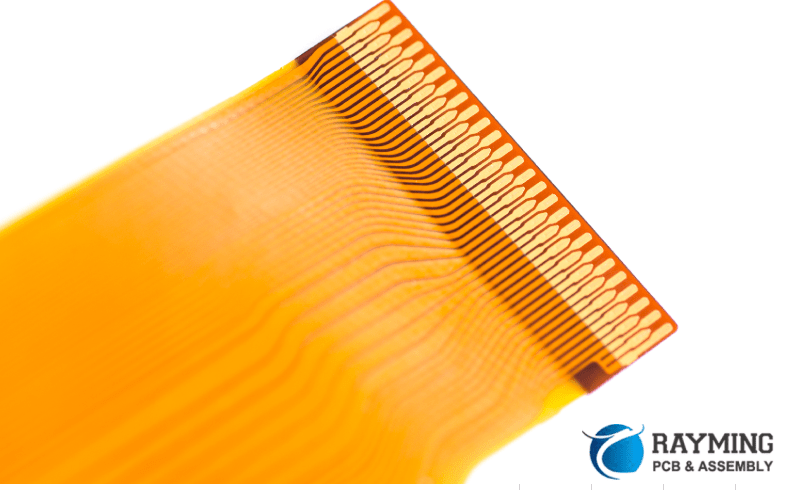
ALL ABOUT FLEX PCB
-
Rigid Flex PCB Assembly: A Complete Guide
Posted by
–
 Read more: Rigid Flex PCB Assembly: A Complete Guide
Read more: Rigid Flex PCB Assembly: A Complete GuideWhat is Rigid Flex PCB? A rigid flex PCB (also known as rigid flex circuit board or flex-rigid PCB) is a printed circuit board that consists of multiple layers of flexible polymer and rigid FR4 laminates. These circuit boards provide flexibility in certain areas of the PCB while maintaining rigidity […]
-
 Read more: Flexible Circuit Design: An Overview for Engineers
Read more: Flexible Circuit Design: An Overview for EngineersIntroduction Flexible circuits, also known as flex circuits, are a type of printed circuit board that can bend and flex. They are made from flexible dielectric materials like polyimide or polyester rather than rigid boards like FR-4. Flex circuits enable unique form factors, moving parts, and dynamic flexing in electronic […]
-
 Read more: Flexible Circuit Materials: A Comprehensive Overview for PCB Designers
Read more: Flexible Circuit Materials: A Comprehensive Overview for PCB DesignersIntroduction Flexible printed circuits (FPCs) have become an integral part of modern electronics due to their ability to bend and flex to fit into tight spaces. As flexible PCBs grow in popularity, it’s important for PCB designers to understand the properties and applications of the various flexible circuit materials available. […]
-
Flat Flex PCBs: An Overview
Posted by
–
 Read more: Flat Flex PCBs: An Overview
Read more: Flat Flex PCBs: An OverviewIntroduction to Flat Flex PCBs A flat flex PCB (also known as FFC or flexible flat cable) is a type of flexible printed circuit board made of thin and flexible dielectric materials. Flat flex PCBs can be bent, twisted, folded or flexed to fit into tight spaces and 3D packages […]
-
PCB Board Stiffeners: A Complete Guide
Posted by
–
 Read more: PCB Board Stiffeners: A Complete Guide
Read more: PCB Board Stiffeners: A Complete GuideWhat is a PCB Board Stiffener? A printed circuit board (PCB) stiffener is a rigid plate or frame that is attached to a PCB to reinforce it and prevent warping or flexing. Stiffeners help minimize stresses and maintain the flatness of the PCB during assembly, shipping, and use. PCB stiffeners […]
-
Getting the Most out of Cheap Flexible PCBs
Posted by
–
 Read more: Getting the Most out of Cheap Flexible PCBs
Read more: Getting the Most out of Cheap Flexible PCBsIntroduction Printed circuit boards (PCBs) are integral components of most modern electronic devices. Flexible PCBs provide many advantages over traditional rigid PCBs, including flexibility, durability, and the ability to fit into tight spaces. Although flexible PCBs are often more expensive than rigid ones, there are ways to obtain high-quality flexible […]
-
Designing Flexible PCBs with Altium Designer
Posted by
–
 Read more: Designing Flexible PCBs with Altium Designer
Read more: Designing Flexible PCBs with Altium DesignerIntroduction Flexible printed circuit boards (Flex PCBs) have become an increasingly popular solution for connecting electronic components in situations where rigid boards are impractical. With their ability to bend and flex, these circuits can fit into tight spaces and move within an electronic device. Designing flex PCBs requires specialized knowledge […]
-
Flex PCB Soldering: A Guide to Best Practices
Posted by
–
 Read more: Flex PCB Soldering: A Guide to Best Practices
Read more: Flex PCB Soldering: A Guide to Best PracticesIntroduction Flex PCBs (Flexible printed circuit boards) have become increasingly popular in modern electronics due to their ability to bend and flex to fit into tight spaces. However, soldering flex PCBs can be more challenging than soldering traditional rigid PCBs. Proper flex PCB soldering technique is critical to creating reliable […]
-
OSH Park Flex PCBs: An In-Depth Guide
Posted by
–
 Read more: OSH Park Flex PCBs: An In-Depth Guide
Read more: OSH Park Flex PCBs: An In-Depth GuideIntroduction to Flex PCBs A flex PCB (flexible printed circuit board) is a type of printed circuit board that is made of a flexible, bendable material. The most common base material for flex PCBs is polyimide, which can be bent and flexed repeatedly without damage. Flex PCBs provide several advantages […]
-
 Read more: Materials Used in Flexible Printed Circuit Boards (FPCBs)
Read more: Materials Used in Flexible Printed Circuit Boards (FPCBs)Introduction Flexible printed circuit boards (FPCBs) are made from flexible materials that allow them to bend and flex without damage. They are commonly used in consumer electronics, medical devices, automotive electronics, and other applications where a rigid printed circuit board is not suitable. The materials used in FPCBs must be […]




